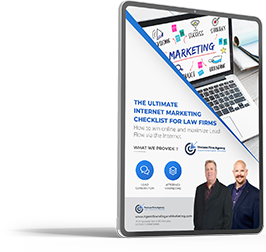Key Takeaways: Comparing Lead Generation Strategies in the Insurance Industry
- Essential Role of Lead Generation: Effective lead generation is crucial for identifying potential clients and fostering the growth of an insurance business. It is the backbone of expanding customer base and increasing sales.
- Buying Leads for Quick Results: Purchasing leads provides immediate access to potential clients and is time-efficient. This strategy is particularly useful for rapid expansion but involves costs per lead and reliance on third-party data providers.
- Networking Builds Deeper Relationships: Employing networking as a lead generation strategy allows insurance agents to build long-lasting and trustworthy relationships with clients. It involves lower costs than buying leads but requires more time to yield results.
- Combining Strategies for Enhanced Effectiveness: Integrating both buying leads and networking can maximize the benefits of each approach. This combined strategy can enhance personal branding, increase brand awareness, and develop a stronger online presence.
- Understanding Different Types of Leads: Knowing the difference between exclusive and shared leads is important. Exclusive leads, though more expensive, provide higher relevance and quality, while shared leads are more cost-effective but less specific.
- Case Study Insight: Hypothetical scenarios, such as the story of “John,” demonstrate the potential effectiveness of using mixed strategies. These examples highlight how combining different approaches can significantly improve business outcomes.
- Experimentation and Analysis Are Key: Insurance agents are encouraged to try various lead generation strategies and analyze their outcomes to determine the most effective approach for their specific needs and goals.
Introduction
Lead generation is crucial for the success of any insurance business. An effective lead generation strategy enables insurance companies or agents to identify potential clients and establish successful connections. Choosing the right lead generation strategy is vital for boosting sales and business growth. In this article, we’ll explore two popular strategies—buying leads and networking—and discuss the advantages and disadvantages of each to help you make an informed decision.
Understanding Lead Generation in the Insurance Sector
Insurance agents employ variousmarketing techniques to attract potential customers. Lead generation not only helps identify prospective clients interested in their products and services but also supports the overall growth of the insurance business by maintaining a steady influx of potential customers. It’s essential for agents to overcome challenges such as convincing prospects of the necessity of insurance products. As the adage goes: “Hope for the best, but plan for the worst,” agents must encourage clients to prepare for life’s unforeseen events through adequate insurance coverage.
Buying Leads
Currently,buying leads is a highly popular lead generation strategy. This approach involves acquiring the contact information of businesses and individuals interested in insurance products from third-party companies. It offers quick access to potential clients and saves time, making it a time-efficient option. However, this strategy comes with costs per lead and dependence on third-party providers. Agents can choose between exclusive leads, which are sold to only one buyer, and shared leads, which are cheaper but bought by multiple companies. Exclusive leads generally offer higher quality and relevance.
Networking as a Lead Generation Strategy
Networking presents a robust method for generating leads. This strategy encompasses online platforms, community engagement, and professional associations. Networking helps build long-term relationships and trust with clients, resulting in higher credibility and lower costs compared to buying leads. However, it is more time-consuming and may take longer to see results compared to the direct approach of buying leads.
Combining Strategies for Optimal Results
Integrating both buying leads and networking can significantly benefit insurance agents. This combined approach enhances personal branding, increases brand awareness, and strengthens online presence. Moreover, networking can help nurture relationships with purchased leads, optimizing overall lead quality.
Case Studies
Consider a hypothetical example of an insurance agent named John, who combines both buying leads and networking in his strategy. John carefully selects high-quality leads from a lead generation company, ensuring they align closely with his target audience. Simultaneously, he actively participates in local networking events and attends industry conferences. This dual approach allows him to significantly expand his professional network. By integrating buying leads with networking, John hypothetically grows his client base and boosts sales, taking his insurance business to new heights over several months. This example illustrates the potential benefits of employing a mixed lead generation strategy effectively.
Conclusion
As demonstrated, both buying leads and networking can be effective lead generation strategies for insurance companies. Each method has its merits and can be used depending on the company’s specific needs and circumstances. Experimenting with these strategies and analyzing the outcomes can help insurance agents find the most effective approach for their business.
Need Expert Marketing Advice?
If you need assistance in marketing your insurance company or wish to learn more about optimizing lead generation strategies, contact us today. We’re here to help you expand and enhance your insurance business.
FAQs: Lead Generation Strategies for Insurance Agents
What is lead generation in the insurance industry?
Lead generation in the insurance industry involves identifying and attracting potential clients who are interested in insurance products and services. It is a critical process that helps insurance agents and companies expand their customer base and increase sales.
Why is it important to choose the right lead generation strategy?
Choosing the right lead generation strategy is crucial because it directly impacts the efficiency and effectiveness of reaching potential clients, converting leads into customers, and ultimately, driving business growth.
What are the main advantages of buying leads?
The main advantages of buying leads include quick access to potential clients, time efficiency, and the ability to rapidly scale customer outreach efforts. It allows agents to focus more on sales and less on the initial client acquisition phase.
What are the disadvantages of buying leads?
Disadvantages include the costs associated with purchasing each lead, potential issues with lead quality, and dependence on third-party providers for lead supply. These factors can affect the overall return on investment.
How does networking benefit insurance agents?
Networking helps build long-term, credible relationships with clients and other industry stakeholders. It fosters trust and loyalty, which are crucial for sustained business success. Networking also tends to have lower upfront costs compared to buying leads.
What are the drawbacks of using networking as a lead generation strategy?
The primary drawback of networking is that it is time-consuming. Building meaningful relationships and establishing trust takes time, which can delay immediate sales opportunities compared to the direct approach of buying leads.
Should insurance agents use a single lead generation strategy or combine multiple methods?
Combining multiple lead generation methods is often more effective than relying on a single strategy. This approach allows agents to capitalize on the immediate benefits of buying leads while also building a sustainable, trust-based client base through networking.
Can you provide a real-life example of successful lead generation in the insurance industry?
The case study of John, a hypothetical insurance agent, illustrates how combining buying leads and networking can effectively grow a client base and enhance business performance. This mixed approach leverages the strengths of both strategies for optimal results
How can insurance agents evaluate the success of their lead-generation strategies?
Agents should track key performance indicators (KPIs) such as lead conversion rates, cost per acquisition, customer lifetime value, and return on investment (ROI). Regular analysis and adjustment based on these metrics can help optimize lead generation efforts.






